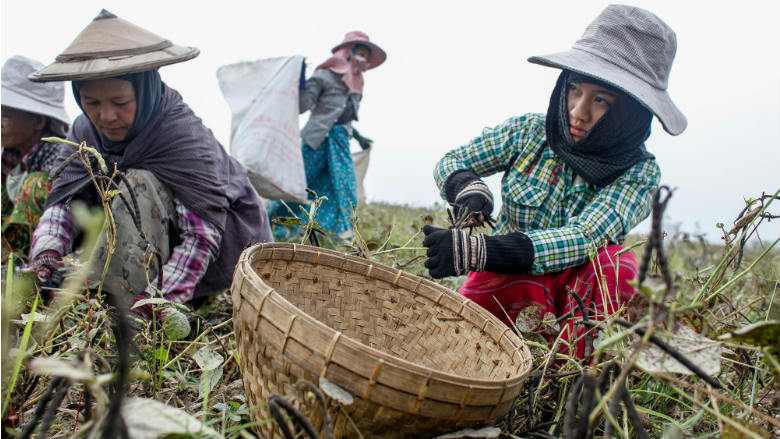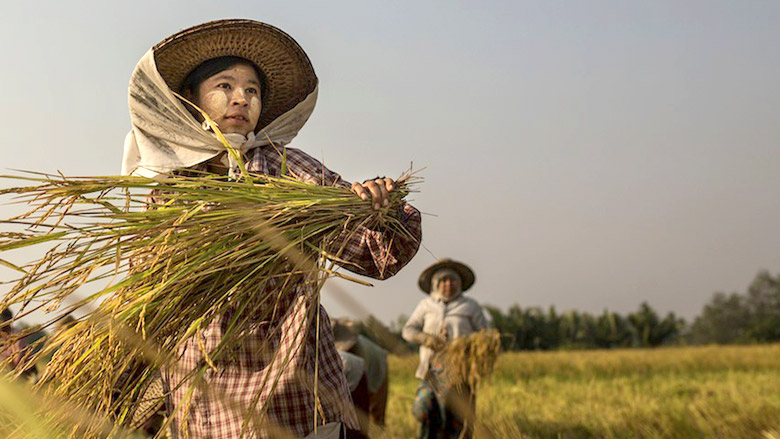The Qualitative Social and Economic Monitoring of Livelihoods in Myanmar (QSEM) research program is a panel study of rural life in Myanmar. It examines people’s livelihood strategies and outcomes, the factors that shape those strategies—including issues such as land, debt and credit, climate change and disaster—and how broader social and institutional changes affect people’s livelihoods.
The research began in 2012, and has coincided with a period of significant economic and political change in Myanmar. It is thus a lens through which to examine how Myanmar’s transition is reflected in people’s lives at the village level.
Today, it is one of the largest and longest-running panel studies of its kind. During the first phase, between 2012-2015, QSEM researchers visited 54 villages in three regions (Ayeyarwady, Magway and Mandalay) and three states (Chin, Rakhine and Shan) across five research rounds, conducting interviews and focus group discussions with about 800 households in each round, and spending about six months in total living in the villages.
By monitoring and understanding changes of village life and rural livelihoods, QSEM aims to help the development community identify and respond to new and emerging challenges, and inform the government, development partners, and others about the implications of broader policy changes at village level. The research is a partnership between the World Bank, Enlightened Myanmar Research (EMR), and the Livelihoods and Food Security Trust Fund (LIFT), which funds the work.
The findings of the research have been published in a series of reports, known as the QSEM Series.
Key Findings
- Livelihood patterns vary by agro-ecological zone. Casual labor is the most common form of primary livelihood, followed by small-scale farming.
- Differences in assets affect people’s livelihood outcomes. Richer people have good quality assets allowing better livelihood returns and diversification of livelihood activities. Poorer people have seasonal earnings and are more vulnerable to risks.
- There is an endemic lack of credit, particularly for the poor, who face higher interest rates.
- Migration is a very important coping strategy for households to meet emergency needs, such as buying land, repairing houses or paying school fees, and also for medium income households to buy household goods and livestock.
QSEM 2 (September – October 2012)
- Climate change-related conditions and extreme weather such as drought and excessive rainfall lead to agricultural crop loss and yield decline.
- There is a perceived decline in fish stocks. Fishermen have to spend more time fishing to catch the same amount of fish.
- Poor households seek casual work, largely in agriculture, to cope with food insecurity. There are strong seasonal variations in demand for casual labor.
- Across agriculture, livestock and fishing, households lack access to market information, which put them in a disadvantaged position when negotiating sale prices with brokers.
- There is incremental change in the village livelihoods context and new dynamics particularly in land, labor and credit.
- New land registration laws were being implemented in a number of villages. Where implemented the process went smoothly and was received with high expectations from communities. There were some increases in land disputes, potentially linked to mobilization around implementation of the new laws.
- There is perceived intensification in the kinds of problems and shocks people face and some changes in coping, with an increased emphasis on domestic migration.
- Changes in village governance have seen greater competition for official leadership positions (village tract administrators) with some impacts on social relations.
- Donor assistance, implemented primarily through local and international NGOs, continues to be the predominant form of external support in most villages. Villages continue to expect little assistance from the central government, although there were small increases in education and health services.
- Villagers experience better returns on their livelihoods than in previous years, driven mainly by high prices for key crops including paddy and corn. The underlying structural constraints affecting farmers, including high labor costs and unreliable credit, persist.
- There are noticeable increases in migration and, to a lesser extent, rural, non-farm diversification. Domestic migration to Yangon is increasing, especially for Ayeyarwady and the Dry Zone, as it provides greater certainty for year-round employment.
- Some poor households are not able to benefit equally from such positive trends, including fisherfolk and vulnerable groups including households with limited access to productive labor and some women-headed households.
- People feel better placed to raise grievances with local government and, in response, officials are more cautious in performing their functions.
- Government assistance has increased considerably. As village tract administrators act as the main interface between villagers and government this has seen an expansion in their role.
An additional QSEM team also conducted a mixed-methods thematic study on migration in Ayeyarwady and Magway regions.
For the second phase of QSEM, between 2015 and 2018, QSEM plans to undertake three more rounds of research annually, which would be complemented by more in-depth ethnographic research.

